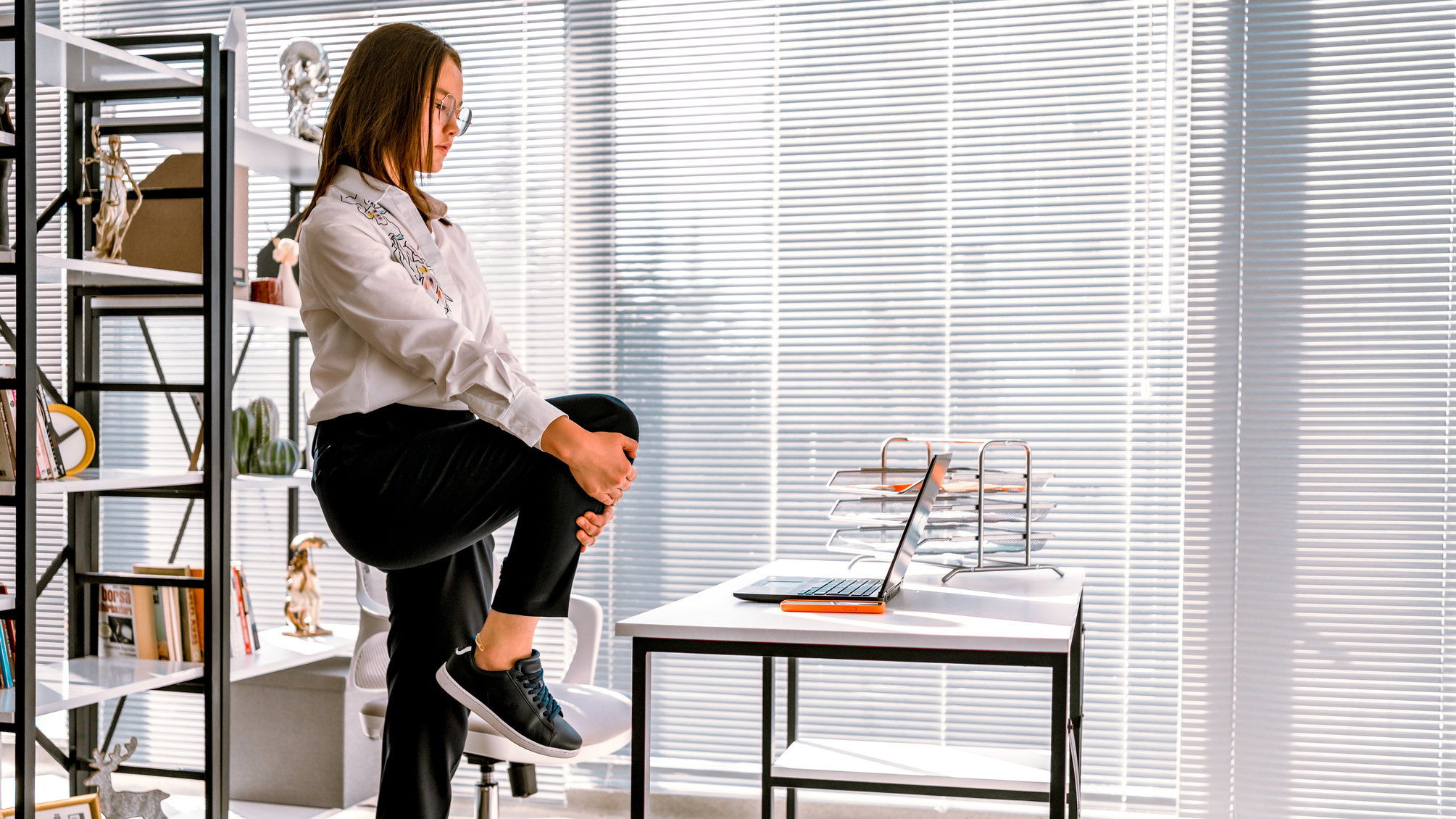Taking two-minute stretching breaks throughout the day is more effective than doing one long flexibility session, according to a strength coach
You've heard of exercise snacking—stretch snacking is just as effective

The benefits of stretching are wide-ranging, from reducing stiffness and achiness to improving flexibility and posture—all helping you to move better during everyday life.
But finding the time to stretch can be tricky, our busy lives often mean we don’t have a spare hour, or even 30 minutes, to dedicate to this important practice.
Well, there’s some good news. According to strength coach and yoga instructor Meredith Witte you might be better off swapping long stretch sessions for short bursts of stretching throughout the day.
"Taking hourly two-minute breaks from your workday to stand, walk around and do a couple of stretches is far more beneficial for your muscles than one 30-45 minute stretching session," says Witte, who explains how these stretching snacks can help offset the damage our desk jobs do to our body.
"As humans, we are biologically designed to move—our bodies weren’t designed to sit stationary at desks all day,” explains Witte.
"While most of us can’t quit our jobs and go live in the woods to cure our back pain, we can aim to move more frequently."
Can just two minutes of stretching be effective?
"Taking just two minutes to stretch every hour helps improve circulation, delivering more oxygen and nutrients to your muscles and brain," says Witte.
Start your week with achievable workout ideas, health tips and wellbeing advice in your inbox.
"This, in turn, reduces muscle stiffness, joint pain, and postural imbalances."
It can also improve mental health. "Both stretching and eye breaks activate the parasympathetic nervous system, helping us feel calmer and more relaxed," says Witte.
And research backs up that snack-sized breaks during the workday can support better health, with a 2023 study by Columbia University showing that five minutes of walking every half hour lowered participants' blood sugar spikes by 58% compared with when they were sitting all day. The breaks also helped lower their blood pressure.
Witte believes that short stretching sessions are a better way to improve how your body feels throughout the day.
"Short, frequent bouts of stretching help prevent muscle stiffness and improve joint health and mobility more effectively than a single, long session," says Witte."
Longer routines add value to our lives, but that doesn’t mean we should forget about movement for the other hours of the day."
The best stretches to do as a break from your desk
A post shared by Ruth Gaukrodger | Fitness editor (@ruthgaukrodger_fitness_editor)
A photo posted by on
So, which stretches should you do when you take your hourly break?
"Any movement is good movement," says Witte, suggesting you do stretches that you enjoy and the ones that make you feel better.
She also recommends doing stretches that counteract the forward-slouched posture a lot of people adopt while sitting at a desk.
Five stretches you can do at your desk
Here, she shares five stretches you can do next to your desk without any equipment or getting changed into activewear. "These movements help open up the chest, improve spinal mobility, and release tension in key areas," she says.
1. Wall pec stretch
Time: 20-30sec each side
- Stand with your right shoulder side on to a wall and place your palm flat on the wall with your elbow at shoulder height, keeping your forearm on the wall too if you can.
- Step your right foot forward and push your chest forward.
- Hold for time then switch sides.
2. Upper back rotation
Time: 30sec
- Sit or kneel with a straight spine and clasp your hands together in front of you.
- Slowly twist your torso and head to one side, leading with your shoulders, and keep your lower body stable.
- Hold briefly, then return to the center and rotate to the other side.
- Continue, alternating sides.
3. Neck circle
Time: 20sec each side
- Sit or stand with your shoulders relaxed.
- Slowly drop your chin to your chest, then rotate your head clockwise. Move gently through the range of motion, feeling the stretch in your neck.
- Continue rotating clockwise for time, then repeat anticlockwise.
4. Leg swing
Time: 20sec each side
- Stand next to a wall or hold onto it lightly for support.
- Swing one leg forward and backward in a controlled motion, keeping your torso upright.
- Continue for time then switch sides.
5. Downward dog at the wall
Time: 20-30sec
- Stand about arm’s length from a wall and place your hands on it at shoulder height.
- Step back and hinge at the hips, lowering your chest while keeping your back flat.
- Press your palms into the wall and push your hips back to feel the stretch in your shoulders and hamstrings.
Alice Porter is a freelance journalist covering lifestyle topics including health, fitness and wellness. She is particularly interested in women's health, strength training and fitness trends and writes for publications including Stylist Magazine, Refinery29, The Independent and Glamour Magazine. Like many other people, Alice's personal interest in combining HIIT training with strength work quickly turned into a CrossFit obsession and she trains at a box in south London. When she's not throwing weights around or attempting handstand push-ups, you can probably find her on long walks in nature, buried in a book or hopping on a flight to just about anywhere it will take her.